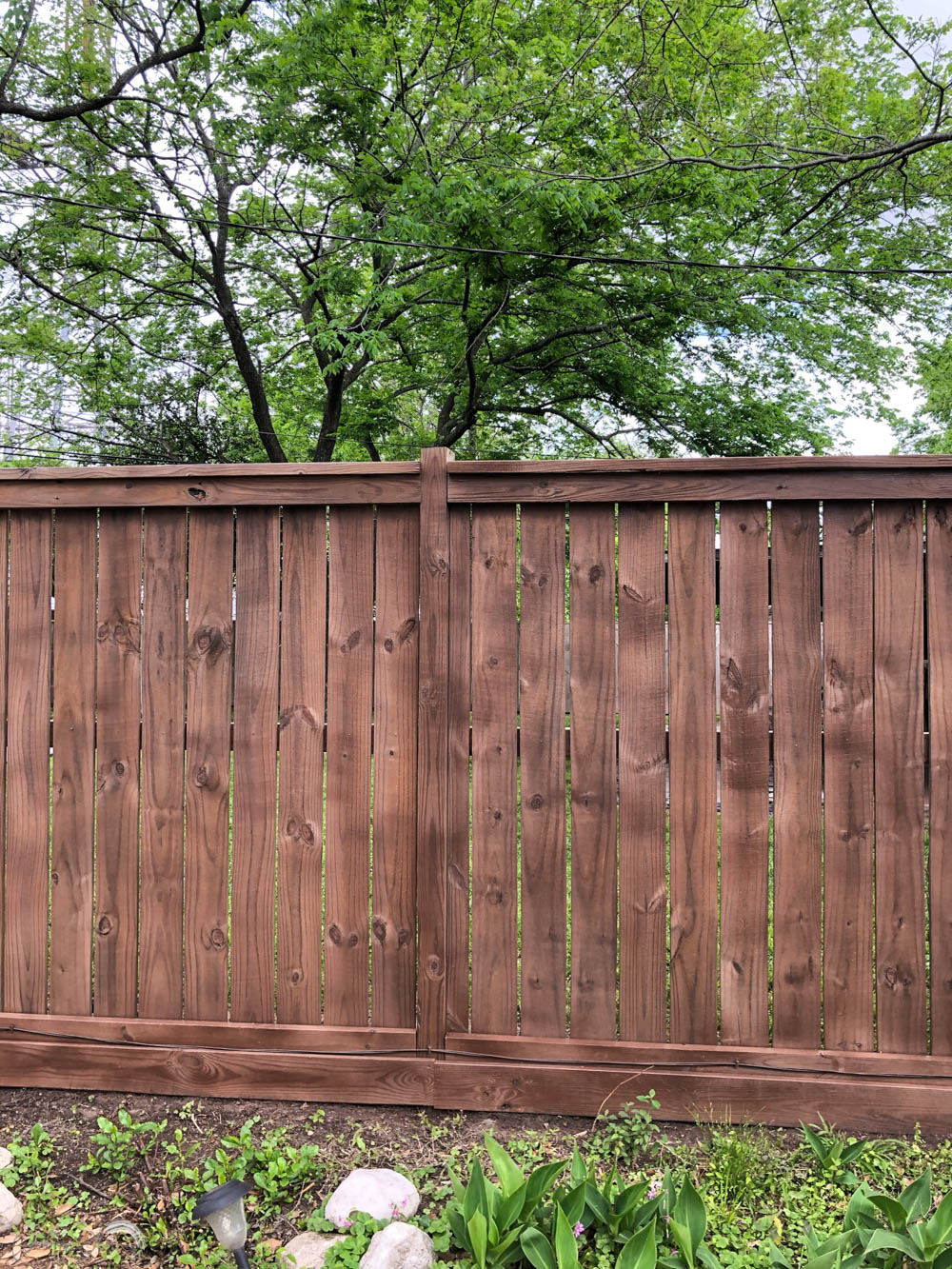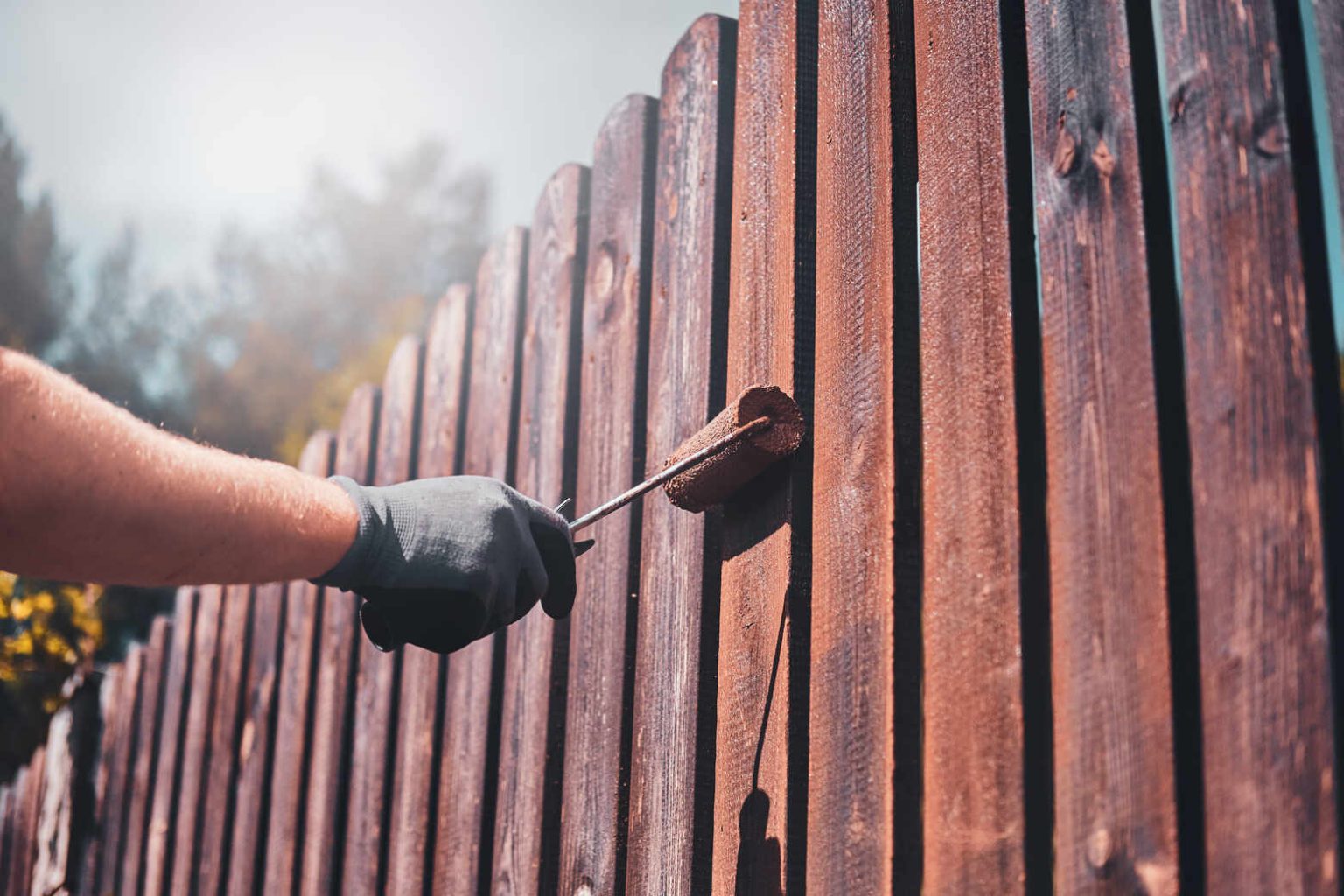Enhance Your Property's Charm with Costs Fence Staining!
Enhance Your Property's Charm with Costs Fence Staining!
Blog Article
Exactly How to Choose the Right Fencing Discoloration for Your Residential Property
When it pertains to enhancing the appearance and durability of your property's fencing, picking the appropriate stain is an important decision that needs cautious factor to consider. With a myriad of options available in the market, each dealing with various wood kinds, colors, and openness levels, the procedure can quickly become overwhelming. Making an enlightened choice can dramatically affect the general visual appeals and durability of your fencing. Exactly how can you guarantee that you pick the ideal fence tarnish that lines up with your residential property's style and maintenance demands? Allow's explore some crucial variables to assist you in this decision-making process.
Comprehending Wood Types
To choose the suitable fence stain, it is important to have a thorough understanding of the numerous types of timber commonly used for secure fencing. The choice of timber plays a crucial duty in establishing the long life and overall looks of the fencing. Cedar is a preferred selection as a result of its all-natural resistance to decay and bugs, making it a long lasting choice for outside structures. Pine is one more common timber used in fence, recognized for its affordability and ease of staining. Want is much more vulnerable to warping and decaying compared to cedar. Redwood is a premium alternative known for its striking appearance and all-natural resilience, though it features a higher cost. When selecting a fence discolor, it is essential to consider the sort of wood being used to make sure compatibility and optimum security. Comprehending the attributes of various wood types will certainly help you make a notified choice when it comes to picking the best fence discolor for your residential or commercial property - Fence Staining Near Me.
Selecting the Right Color
Selecting a suitable color for your fencing tarnish is an essential decision that considerably affects the total visual appeal of your residential or commercial property. The color you select ought to match the style of your home, blend sympathetically with the environments, and show your individual taste. When choosing a color, take into consideration the existing color combination of your residential or commercial property. For an all-natural appearance, earthy tones like browns, environment-friendlies, or grays work well. These shades can help the fence blend into the landscape and create a cohesive look. If you favor a more modern or bold appearance, take into consideration going with darker shades like black or deep charcoal for a striking comparison. Lighter shades such as whites or light grays can make a fence show up bigger and include a touch of elegance to your residential or commercial this contact form property. Inevitably, the appropriate color choice will boost the elegance of your fencing and elevate the total curb appeal of your home.

Considering Transparency Levels
When picking the appropriate color for your fence discolor, an additional important element to think about is the degree of openness that will certainly finest suit your home's visual and upkeep needs. Transparency levels in fence spots normally fall into 3 categories: transparent, semi-transparent, and strong. Take into consideration the degree of direct exposure your fencing deals with, the desired upkeep regularity, and the aesthetic you wish to accomplish when selecting the best openness degree for your fence tarnish.
Examining Upkeep Requirements
Taking into consideration the long life and maintenance of your fencing, reviewing the maintenance needs is essential in determining one of the most ideal fence tarnish for your home. The level of maintenance required for your fencing can vary depending on aspects such as the kind of timber, weather in your area, and your individual choices.
When evaluating upkeep requirements, it is vital to take into consideration the resilience of the fence discolor. Some spots need more frequent reapplication than others, so selecting a discolor with a longer life expectancy can help in reducing the overall maintenance needs of your fencing (Fence Staining). In addition, aspects such as resistance to UV rays, water, and mildew can influence exactly how typically you need to re-stain your fence

Examining Samples Prior To Application
Before applying any fencing discolor, it is advisable to conduct example tests to make sure compatibility with the wood and wanted visual result. Evaluating examples allows you to analyze just how the stain will certainly communicate with the particular type of timber used in your fencing, as different woods can soak up spots in different ways. To begin, choose a little unnoticeable area of the fence to apply the discolor examples.
Verdict
To conclude, picking the ideal fencing stain for your property involves comprehending the timber type, picking the ideal color, considering transparency levels, assessing upkeep requirements, and testing samples before application (Fence Staining). By taking these factors right into consideration, you can guarantee that your fence tarnish enhances your residential property while providing the essential security and durability. Make an educated decision to enhance the appearance and longevity of your fencing
Report this page